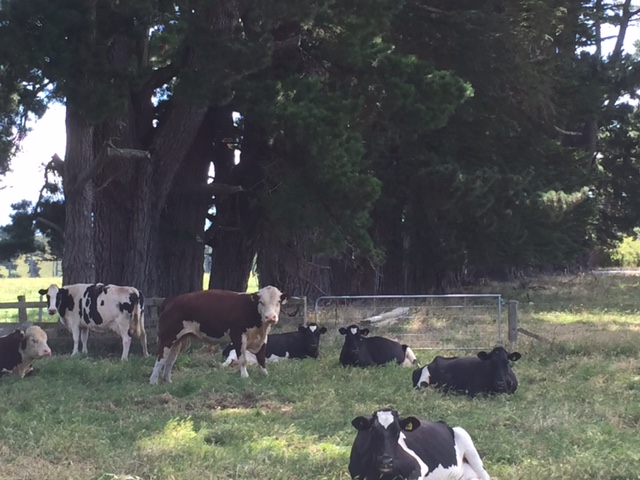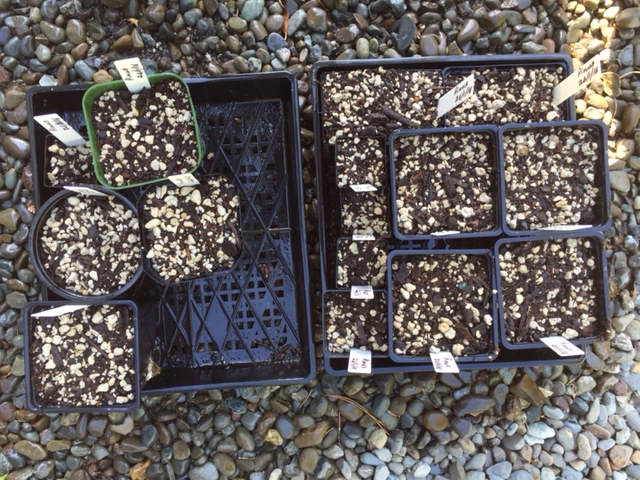During a conversation with Noel Plowman at the National Bonsai Convention and Show in New Zealand towards the end of 2015, Noel made the statement that it is hard to get good Pine genetic material in New Zealand. Most of the seedlings propagated for the forestry industry is genetically engineered to grow straight trunks with no bark. Both of these factors are not really what Bonsai growers want. We then talked about the thousands of very old Pine trees all over New Zealand, mostly growing on farmland. The photo below shows such a scene, complete with good old New Zealand dairy cows.

This made me look at these trees in a different light and it did not take me long to go and scavenge on a farm (with the farmers permission) to find these original genetic material in seeds for propagation purposes. This I did knowing full well that I am germinating these seeds for the next generation and not myself. The main idea was to collect the cones from trees that show thick bark.
Cones collected, the next job was to get the seeds out of the cones. This basically ended up being a good solid shake of the cone and the seeds fell out. Quite a few seeds were harvested from each cone. The wings were removed from the seeds.
The next step was to find the viable seed. This is done by placing the seeds in a container with water. The seeds that sink are more viable and the ones that float, are discarded.
I left the seeds overnight and planted the viable seeds the following day. The seeds do have a pointy end and the seed is planted with this pointy end facing downwards. Now the long wait begins as it is known that these seeds can take a long time to germinate and that they do so in a haphazard way. I will update this post as the process unfolds.

Planted and labelled. The long waiting game now starts.
The waiting is over. This was quick. Only three weeks from planting to germination.












Reblogged this on Wolf's Birding and Bonsai Blog.
LikeLike
Sorry, you have been misinformed – no NZ forestry pines are genetically modified – they have been selected for specific traits such as straight boles and smooth bark, and the best ones for the purpose have been cloned. A lot of this selection process was done in the 50s and 60s.
LikeLike
Great, that means that as Bonsai enthusiasts, we can do the reverse and select for the traits we want in our trees. Thank you for your comment.
LikeLike
They certainly are experimenting. http://www.scionresearch.com/research/forest-science/tree-improvement/molecular-breeding/genetic-modification
LikeLike
They may be now, but didn’t have that technology at the time Noel was talking about.
LikeLike
If you look at the dates in the article, they have been going for a while. No indication that it is commercial though.
LikeLike
I enjoy planting seeds and Sometimes it is a challange For me And I am very patient to see what happens neXt,
LikeLike
Good Luck
LikeLike